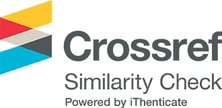Faktor-faktor yang mempengaruhi perilaku disfungsional audit pada auditor: Systematic Literature Review
DOI:
10.33395/owner.v9i2.2620Keywords:
Dysfunctional audit behavior and Dysfunctional auditAbstract
Dysfunctional audit behavior is deviant behavior carried out by an auditor in the form of manipulation, fraud or deviation from standards. Behavioral deviations that are usually carried out by auditors include reporting audit time with a total time shorter than the actual time, changing and/or stopping procedures that have been established in the implementation in the field, obtaining evidence that is less accurate, processing less accurately, and errors in the audit stages. This study aims to determine the main factors that influence dysfunctional audit behavior carried out by auditors. The method used in this study is the literature review (SLR) method. Research data were obtained from indexed journals Q1, Q2, Q3 and sinta 2 from emerald, proquest, and simantic scholar. This review analyzed 24 articles on dysfunctional audit behavior in the world published from 2010-2024. Most of the articles published use a quantitative approach and focus on public accounting firms. The main findings of this study found that the most influential factors (determinants) in dysfunctional audit behavior are time budget pressure, locus of control, gender, turnover intention, performance evaluation, task complexity, auditor work experience, employee performance, client interests, and organizational and professional commitment. Furthermore, further research should also consider the need for exploration, reflection, and asking more critical questions, not from the existing side. For example, asking again how the head of the Public Accounting Firm conducts performance assessments to reduce dysfunctional audit behavior and research on dysfunctional audit behavior is not only in the Public Accounting Firm but can be done in other public sectors.
Downloads
Plum-X Analityc
References
Anita, R., Nanda, S. T., Zenita, R., & Abdillah, M. R. (2018). Locus of Control, Penerimaan Auditor atas Dysfunctional Audit Behavior dan Intention to Quit. Jurnal Dinamika Akuntansi Dan Bisnis, 5(1), 43–54. https://doi.org/10.24815/jdab.v5i1.8623
Blackmore, J. A. (2004). A critical evaluation of academic internal audit. Quality Assurance in Education, 12(3), 128–135. https://doi.org/10.1108/09684880410548753
Coram, P., Ng, J., & Woodliff, D. (2003). A survey of time budget pressure and reduced audit quality among australian auditors. Australian Accounting Review, 13(29), 38–44. https://doi.org/10.1111/j.1835-2561.2003.tb00218.x
Donnelly, D. P., Quirin, J. J., & O’Bryan, D. (2003). Auditor Acceptance of Dysfunctional Audit Behavior: An Explanatory Model Using Auditors’ Personal Characteristics. Behavioral Research in Accounting, 15(1), 87–110. https://doi.org/10.2308/bria.2003.15.1.87
Gundry, L. C. (2006). Dysfunctional behaviour in the modern audit environment: The effect of time budget pressure and auditors’ personality type on reduced audit quality practices. October, 1–77.
Hartmann, F. G. H. (2000). The appropriateness of RAPM: Toward the further development of theory. Accounting, Organizations and Society, 25(4–5), 451–482. https://doi.org/10.1016/S0361-3682(98)00036-1
Jaworski, B. J., & Young, S. M. (1992). Dysfunctional behavior and management control: An empirical study of marketing managers. Accounting, Organizations and Society, 17(1), 17–35. https://doi.org/10.1016/0361-3682(92)90034-P
Johari, R. J., Mohd Hairudin, N. A., & Dawood, A. K. (2022). Analysis of factors affecting dysfunctional audit behavior in Malaysia. International Journal of Ethics and Systems, 38(4), 702–719. https://doi.org/10.1108/IJOES-07-2021-0151
Khalil, S., & Nehme, R. (2023). Performance evaluations and junior auditors’ attitude to audit behavior: a gender and culture comparative study. Meditari Accountancy Research, 31(2), 239–257. https://doi.org/10.1108/MEDAR-04-2021-1285
Khatib, S. F. A., Abdullah, D. F., Elamer, A. A., & Abueid, R. (2021). Nudging toward diversity in the boardroom: A systematic literature review of board diversity of financial institutions. Business Strategy and the Environment, 30(2), 985–1002. https://doi.org/10.1002/bse.2665
Kumasey, A. S., & Hossain, F. (2020). Exploring the unfathomable causes of dysfunctional behaviours in the Ghanaian public service: perspectives of social capital. International Journal of Public Sector Management, 33(5), 579–594. https://doi.org/10.1108/IJPSM-07-2019-0187
Linnenluecke, M. K., Marrone, M., & Singh, A. K. (2020). Conducting systematic literature reviews and bibliometric analyses. Australian Journal of Management, 45(2), 175–194. https://doi.org/10.1177/0312896219877678
Massaro, M., Dumay, J., & Guthrie, J. (2016). On the shoulders of giants: undertaking a structured literature review in accounting. Accounting, Auditing and Accountability Journal, 29(5), 767–801. https://doi.org/10.1108/AAAJ-01-2015-1939
Morioka, S. N., & de Carvalho, M. M. (2016). A systematic literature review towards a conceptual framework for integrating sustainability performance into business. Journal of Cleaner Production, 136, 134–146. https://doi.org/10.1016/j.jclepro.2016.01.104
Nehme, R., AlKhoury, C., & Al Mutawa, A. (2020). Evaluating the performance of auditors: a driver or a stabilizer of auditors’ behaviour. International Journal of Productivity and Performance Management, 69(9), 1999–2019. https://doi.org/10.1108/IJPPM-08-2018-0306
Nehme, R., AlKhoury, C., & Alharbi, A. (2022). Stimulants of behavioural change: accounting education schism and gender. Accounting Research Journal, 35(5), 698–720. https://doi.org/10.1108/ARJ-05-2021-0145
Nehme, R., Kozah, A. E., Sadaka, S., & Michael, A. (2023). Accountants’ Behaviour, Performance Evaluation and Educational System. Australasian Accounting, Business and Finance Journal, 17(3), 3–22. https://doi.org/10.14453/aabfj.v17i3.02
Nehme, R., Kozah, Alc. E., & Khalil, S. (2024). Dysfunctional audit behavior: exploring the impact of longitudinal work experience and gender. Journal of Accounting and Organizational Change. https://doi.org/10.1108/JAOC-11-2023-0196
Nehme, R., Michael, A., & Haslam, J. (2022). The impact of time budget and time deadline pressures on audit behaviour: UK evidence. Meditari Accountancy Research, 30(2), 245–266. https://doi.org/10.1108/MEDAR-09-2019-0550
Nurlatifah, S., & Ahmar, N. (2023). Systematic literature review (SLR): “Dysfunctional audit behavior Determinants on Auditors Working at Public Accounting Firm in Indonesia.” Journal Markcount Finance, 2(1), 112–127. https://doi.org/10.70177/jmf.v2i1.610
Paino, H., Ismail, Z., & Smith, M. (2010). Dysfunctional audit behaviour: An exploratory study in Malaysia. Asian Review of Accounting, 18(2), 162–173. https://doi.org/10.1108/13217341011059417
Paino, H., Smith, M., & Ismail, Z. (2012). Auditor acceptance of dysfunctional behaviour: An explanatory model using individual factors. Journal of Applied Accounting Research, 13(1), 37–55. https://doi.org/10.1108/09675421211231907
Prabangkara, S., & Fitriany, F. (2021). Factors that affect dysfunctional audit behaviour: A study to understand external auditor’s role as the guardians of strong and justice organizations (Goal 16 sustainable development goals). IOP Conference Series: Earth and Environmental Science, 716(1), 1–13. https://doi.org/10.1088/1755-1315/716/1/012116
Prasetio, F. V., Handojo, I., & Ghazi, M. (2023). Pengaruh Locus of Control terhadap Dysfunctional Audit Behavior: Religious Control sebagai Pemoderasi. Media Bisnis, 15(1), 137–154. https://doi.org/10.34208/mb.v15i1.2138
Sugeng Wiyantoro, L., Yan, C., & Yuanyuan, L. (2023). Evaluating the performance of external auditor during COVID-19: The case of dysfunctional audit behaviour in Indonesia. Cogent Business and Management, 10(2), 1–59. https://doi.org/10.1080/23311975.2023.2246744
Syam, M. A., Djaddang, S., Mulyadi, & Ghozali, I. (2020). The attributes of dysfunctional audit behavior (dab): Second order confirmatory factor analysis. International Journal of Financial Research, 11(2), 311–322. https://doi.org/10.5430/ijfr.v11n2p311
Tjan, J. S., Sukoharsono, E. G., Rahman, A. F., & Subekti, I. (2019). An analysis of the factors which influence dysfunctional auditor behavior. Problems and Perspectives in Management, 17(1), 257–267. https://doi.org/10.21511/ppm.17(1).2019.22
Umar, M., Sitorus, S. M., Surya, R. L., Shauki, E. R., & Diyanti, V. (2017). Pressure, dysfunctional behavior, fraud detection and role of information technology in the audit process. Australasian Accounting, Business and Finance Journal, 11(4), 102–115. https://doi.org/10.14453/aabfj.v11i4.8
Wetmiller, R. J. (2022). The copycat effect: do social influences allow peer team members’ dysfunctional audit behaviors to spread throughout the audit team? Journal of Applied Accounting Research, 23(2), 362–380. https://doi.org/10.1108/JAAR-12-2020-0232
Yuen, D. C. Y., Law, P. K. F., Lu, C., & Guan, J. Q. (2013). Dysfunctional auditing behaviour: Empirical evidence on auditors’ behaviour in Macau. International Journal of Accounting and Information Management, 21(3), 209–226. https://doi.org/10.1108/IJAIM-12-2012-0075
Downloads
Published
How to Cite
Issue
Section
License
Copyright (c) 2025 Fitria Heny Widyastuti , Yulia Saftiana, Yusnaini, Hasni Yusrianti

This work is licensed under a Creative Commons Attribution-NonCommercial 4.0 International License.
















